The increasing use of SMS and text messaging services for healthcare marketing presents a huge opportunity to improve patient communications, activation, satisfaction, and overall consumer health outcomes. As in other industries, the use of SMS is widely adopted by consumers and is a valuable communication tool across all age groups.
With SMS, there are some important restrictions to be aware of in order to make sure you capitalize on the compelling benefits. It’s important to also understand when it’s most effective to use SMS or other communication tools such as email. Here’s what healthcare marketers need to know.
SMS Benefits and Response Rates for Healthcare Marketing
Today’s healthcare consumers are mobile-centric. Numerous studies on the use of mobile technology by patients show that a majority want to increase the use of their mobile devices to manage their health and communicate with their healthcare providers.
On the communication front, SMS has proven to be highly effective. 90% of people open and read text messages within 30 minutes of receiving them. Millennials open messages even faster — 83% of Millennials open SMS messages within 90 seconds of receipt.[1]
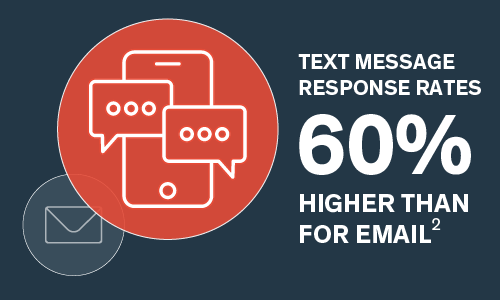

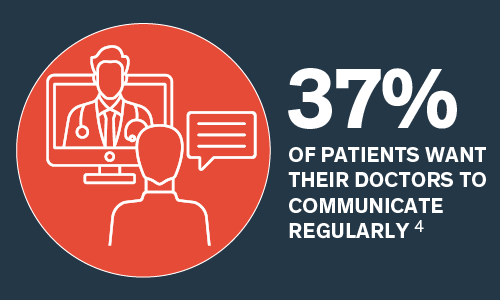
Using SMS for your patient outreach and activation programs will increase your reach and effectiveness to get patients to act on your messages. Many healthcare organizations have more mobile phone numbers than email addresses on file for patients, so you’ll be able to reach more of your patients via text than any other digital channel and better drive immediate action. The result is more consistent, high utilization of your capacity across service lines.
“We are living in a time where we have an endless supply of information at our fingertips — but it’s not always the best, most accurate, or relevant. Health systems and providers must ensure all patients receive the care they need by providing timely, relevant and accurate health information. To meet those expectations, build loyalty, and drive improved health outcomes, they need to think beyond patient engagement, to patient activation: How can they encourage patients to take action as a result of their engagement efforts?”
- Michael Linnert, Founder and CEO, Actium Health
When to Use SMS in Healthcare Marketing
There are several specific HIPAA regulations concerning SMS usage in healthcare to be aware of. The rules go beyond making sure ePHI isn’t transmitted, and it’s important that you work with your compliance team to ensure your SMS messages meet all of the necessary guidelines.
Texting itself is governed by the Telephone Consumer Protection Act (TCPA), which places a number of restrictions on how text messaging can be used. Aside from following the legal regulations, it’s a best practice to offer your patients an opt-in to receive messages. You should also provide your patients with a way to opt-out of receiving text communications, such as placing an unsubscribe option at the end of the SMS message.
With these considerations in mind, here’s how to start planning your SMS outreach programs:
- Work with your operations and service line teams to determine which services to prioritize for driving patient volume.
- Plan “always on” programs and campaigns for routine appointment types such as Annual Wellness Visits, preventive screenings, and care gap appointments.
- Create concise, compelling messaging to drive patient action.
- Generate your campaign audience list using AI-powered audience segmentation.
When determining the use of SMS vs other useful communication tools such as email, take into consideration the type of message being sent, length of content to be included, and outcomes you are looking to achieve. If you are sending any type of long-form content, such as newsletters, promotional campaigns, and educational content, email would be a better tool to use.
Looking at your data to understand how many patient mobile numbers and emails you have access to is another way to evaluate communication strategies. Examining the data on Actium’s CENTARI platform across all of the clients we serve, we found that 65% of patients have SMS eligible numbers on file vs just 25% of patients who are eligible to receive emails. Given these numbers, SMS messages have a greater potential than emails to reach more patients and drive them to action. Even though text messages are opened at far higher rates than emails—with a 98% vs 27% open rate—it is important to use SMS messaging and email appropriately for communications.[5][6]
Best Practices and Examples for Sending SMS Messages
Here are a few best practices for sending SMS messages to patients:
- Never include ePHI in SMS messages.
- Keep your messages to a single segment of 160 characters (including unsubscribe instructions)
- Have patients opt-in to receiving SMS messages.
- Include a way to unsubscribe at the end of each SMS message.
- Keep messages actionable and relevant to the patient.
- Avoid sending multiple SMS messages in a short period of time to ensure messages aren’t automatically deleted by patients because they become annoying and also avoiding any issues with deliverability including having messages marked as SPAM.
- Use always-on programs to continuously reach out to the right patients to book appointments throughout the year.
When these best practices are combined with Actium Health’s CENTARI platform to generate the right audiences for your messages at the right time, you’ll be able to quickly and efficiently drive patient volume across your service lines.
| Examples of Actium Health SMS Outreach | |
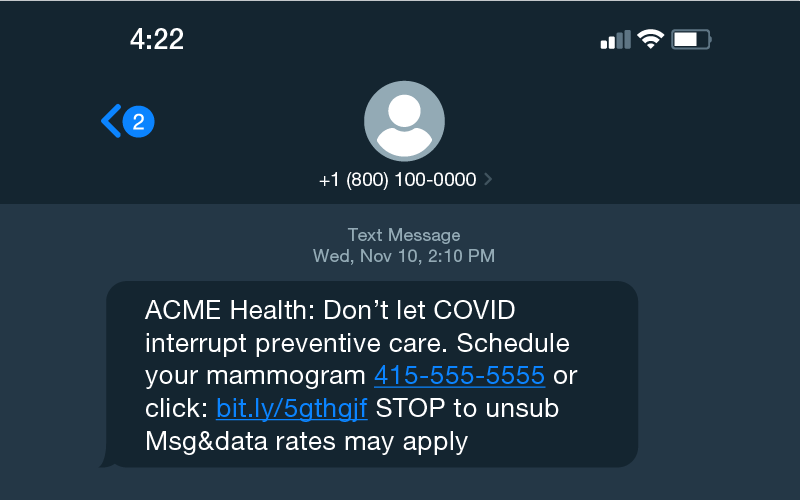 |
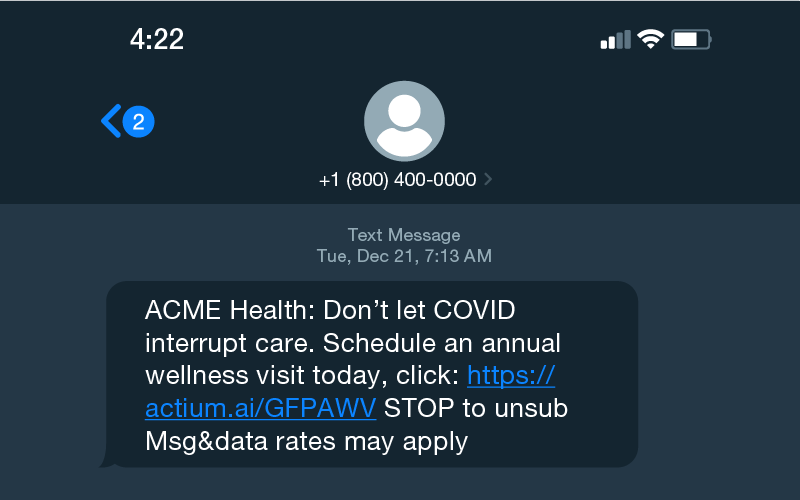 |
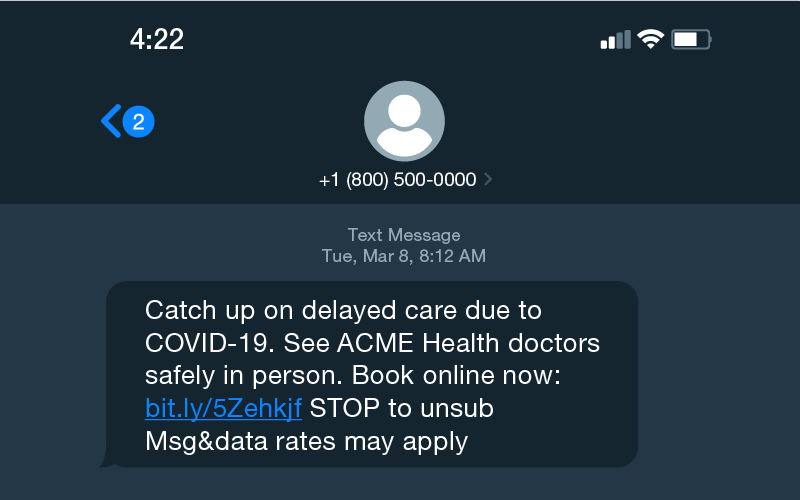 |
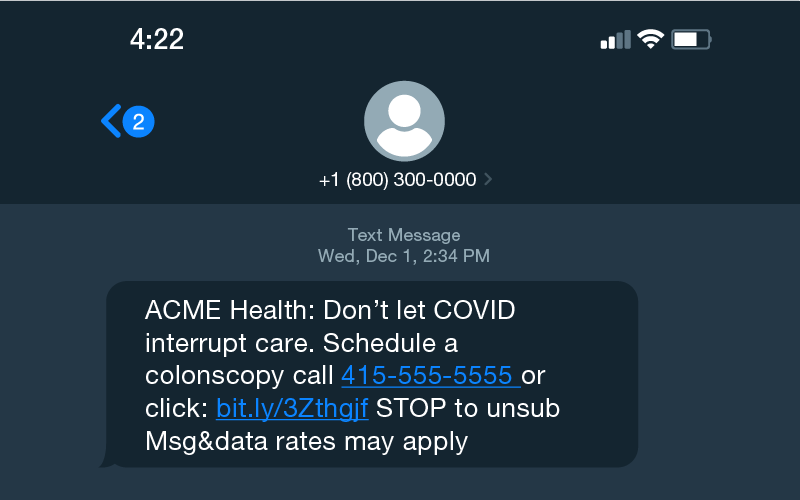 |
SMS in Healthcare Marketing: A Case Study
Arizona was hit particularly hard by COVID-19. It led the country in coronavirus-related hospitalizations with roughly 90% of ICU beds occupied during the summer of 2020, and was the first state to trigger “crisis care standards” to help healthcare workers determine the prioritization of treatment.
Serving more than three million patients, including 1.6 million individuals in greater Phoenix alone, HonorHealth recognized the lofty yet noble task it faced after learning that vaccines for the virus would become available in December 2020. It would need to efficiently and effectively communicate the vaccine’s availability to its patients to get as many eligible individuals vaccinated as quickly as possible.
By mid-January 2021, vaccination appointment scheduling volume had slowed significantly. Fifteen hundred appointment slots needed to be filled as vaccines were not being fully utilized. Having an intimate understanding of its patient demographics, HonorHealth identified two patient groups it knew would be particularly difficult, yet critically important, to engage:
- Individuals age 75+
- Underserved communities
More than 37% of Phoenix’s population do not speak English as their primary language, and more than 17% of the city’s households do not have a broadband internet connection. Without reliable internet access and information about eligibility and registration provided in their native language, it was likely that available appointments would continue to go unfilled, and vaccination rates would remain low. A non-traditional and highly tailored method of engagement was needed. Partnering with Actium, HonorHealth developed and launched a multichannel vaccination campaign that included SMS messages to fill the empty appointments by engaging the two target patient groups.
- Campaign one: Same-day text messages were sent to patients over age 75 who had either interacted with a COVID vaccine information page, and/or read a MyChart message notifying them of vaccine eligibility (but had not scheduled an appointment).
- Campaign two: 2,800 text messages were deployed to individuals in underserved communities. The results of campaign two included 1,000 more inbound calls a day to NOAH’s call center — a 30% increase over normal levels. 50% of recipients who received an SMS message engaged within 24 hours (as demonstrated by same-day inbound calls).
As a result of the two campaigns, more than 2,000 vaccination appointments were scheduled at HonorHealth in less than two weeks, exceeding the goal by more than 500 appointments, and a 30% increase in patient scheduling for the COVID vaccine at NOAH.
Actium Health conducted a survey that revealed where providers have improved patient engagement efforts and where gaps still remain. This new data shines a light on the consumerization of healthcare that has blurred the line between patient and consumer. To access the full survey findings and research report, download the State of Patient Engagement in 2022.

Sources:
[1] 42 Unbelievable Text Message Marketing Statistics That Will Blow Your Mind
[2] What Data Tells Us About The State Of Patient Engagement
[3] FICO Global Survey: 80% of Smartphone Users Interested in Health Care Alert
[4] State of Patient Engagement in 2022, Actium Health
[5] Introducing the 2019 Mobile Usage Report: How Consumers Are REALLY Texting
[6] 2022 Email Marketing Benchmarks

